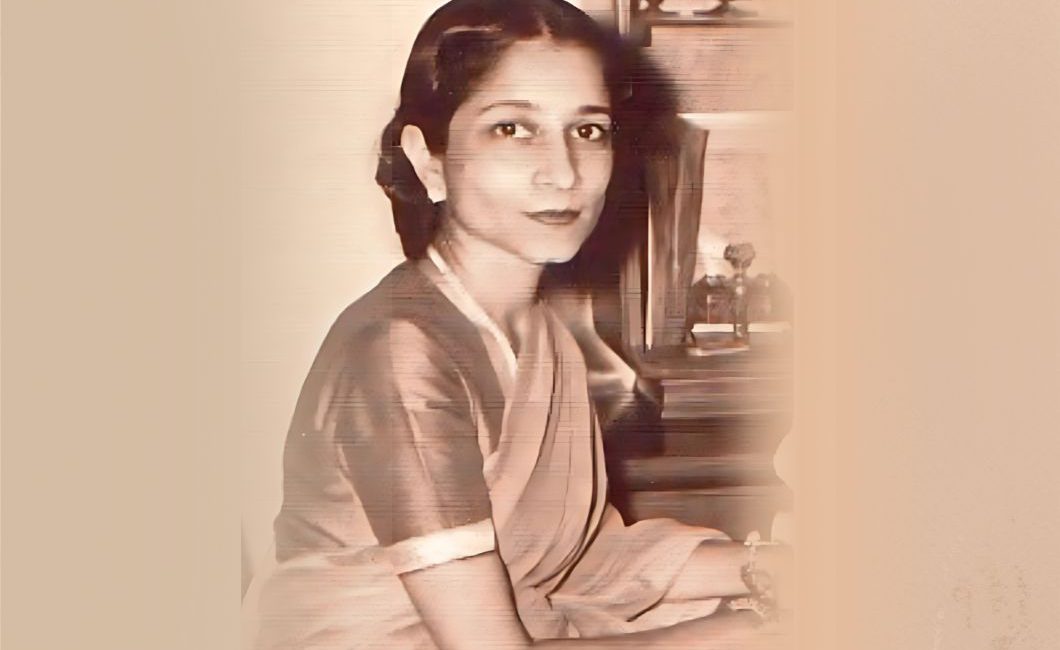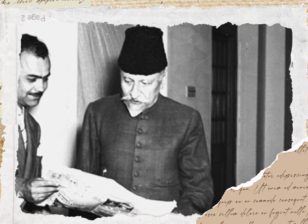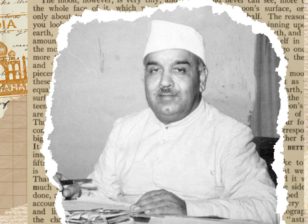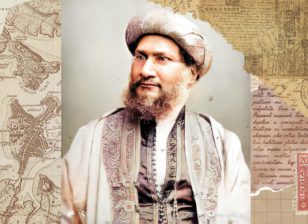The Woman Who Gave India Its Flag: Surayya Tyabji’s Forgotten Legacy
The national flag of India—the Tricolor—that was raised on the first independence day (15 August, 1947) was designed by a Muslim woman.
A report published in The Times of India on 26 January, 1950 makes this contribution clear: “This flag was presented to the nation by the women of India during the historic midnight session of the Constituent Assembly on 14 August 1947.”
The woman referenced here was none other than Surayya Tyabji.
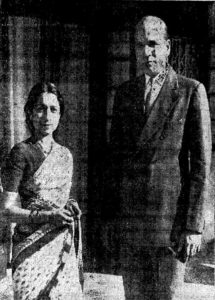
Who was Surayya Tyabji?
Surayya Tyabji (1919–1978) was the granddaughter of the late Sir Akbar Hydari, who served as the prime minister of Hyderabad State. Tyabji was a passionate painter; one of her works was displayed at the Indo-Pakistani exhibition at Burlington House, London, and another one of her paintings was showcased at an exhibition in Jakarta, Indonesia, in 1954. But Tyabji was also passionate in her personality, as described by her daughter Laila.
“If she had to choose a representative image for herself, it wouldn’t have been that carefully composed picture of an ambassadorial wife that was up in that exhibition,” Laila wrote. “She’d probably have chosen one of her escaping into her own private world of painting or even the one climbing the high rocks of Hyderabad, her sari tucked up to her knees. She was the kind of Muslim woman people don’t talk about because she didn’t fit either the docile voiceless burkha-clad stereotype or the fiery activist one. My family had plenty of the latter, though mercifully none of the former. But, in her own way, Amma was also a pathbreaker.“
More Than a Flag: The National Emblem Was Her Work Too
Sheila Dikshit, the former chief minister of Delhi, writes in her book Citizen Delhi: My Times My Life, “Occasionally, the Vice-Chancellor of Aligarh Muslim University, former ICS officer Badruddin Tyabji and his gracious wife, Surayya Tyabji (their daughter Leila Tyabji of Dastkar fame became a good friend years later), would call us over. At that time, I did not know what I came to know later – that the Indian national flag made of hand-spun, hand-woven khadi, which was hoisted on the evening of August 15, 1947, had been designed by none other than the Tyabjis (Surayya Tyabji was 28 years old at the time).”
She further writes, “Everyone had assumed that the Congress tricolour designed by Pingali Venkayya, with Gandhiji’s charkha (hand-operated spinning wheel) in the middle, would be the national flag. Since there was opposition to a party flag becoming the national flag, the Tyabjis were tasked with re-doing the design. The couple decided to replace the charkha with the Ashoka chakra…That was not all. Before re-doing the flag, the couple had designed the national emblem of independent India. A few months prior to independence came the realisation that India would need a new emblem. So, Nehru turned to Badruddin Tyabji, who was part of the Constituent Assembly, to ‘do something about it’, because he had ‘an eye for that sort of thing’.”
She also writes about discovering the fact that the national emblem was also designed by Mrs. Tyabji. She states in her book, “Tyabji’s requests to art schools for designs came up short, being heavily influenced by the British emblem. It was then that the Tyabjis had this brainwave of the lions and the chakra on top of the Ashoka column. Twenty-eight-year-old Surayya drew a graphic version of it and the printing press at the Viceregal Lodge made some impressions of it. That is how the three lions became the national emblem (the text below was a later addition). Laila says her parents never felt that they had ‘designed’ the emblem; it was more like ‘just reminding India of something that had always been part of our identity’. And like most things in their marriage, these two precious tasks were accomplished as a joint effort.”
“Even though Vinod and I were not aware of these details when we visited the Tyabjis, in their hospitality and the erudition they brought to the conversation, we instinctively sensed a deep love for and commitment to a new India, representing a pan-Indian syncretic culture,” she adds.
Stitched Into History
Surayya Tyabji’s daughter, Padma Shri Laila Tyabji, wrote an article titled “How the Tricolour and Lion Emblem Really Came to Be” for The Wire in 2018, in which she said that her father, Badruddin Tyabji, had set up a flag committee headed by Rajendra Prasad on the instructions of Nehru. Badruddin Tyabji was then working as an Indian Civil Service officer in the Prime Minister’s Office.
Laila Tyabji says that it was her parents who not only gave Nehru the idea of Ashok Chakra, but her mother also drew a pictorial draft of the flag. According to Laila Tyabji, “My father watched that first flag – sewn under my mother’s supervision by Edde Tailors & Drapers in Connaught Place – go up over Raisina Hill.”
A Flag Inspired by the Khilafat Movement
It is believed that during the inception of the Khilafat Movement in India in favour of Turkey in 1920, a Pingali Venkayya of the National College in what is now Andhra Pradesh presented a booklet to the Congress. This booklet included descriptions of the flags of other nations as well as designs for the national flag of India. Concurrently, the Khilafat Committee also designed its own flag for the Khilafat Movement. It was from this that Mahatma Gandhi conceived the idea of a distinctive flag for India to inspire the nation’s spirit.
Mahatma Gandhi wrote in Young India on April 13, 1921, “A flag is a necessity for all nations. Millions have died for it. It is no doubt a kind of idolatry that it would be a sin to destroy. For a flag represents an ideal. The unfurling of the Union Jack evokes in the English breast sentiments whose strength it is difficult to measure. The Stars and Stripes mean the world to the Americans. The Star and the Crescent will call forth the best bravery in Islam…”
Gandhi further wrote in the same article, “I have always admired the persistent zeal with which Mr. Venkayya has prosecuted the cause of a national flag at every session of the Congress for the past four years, he was never able to enthuse me; and in his designs, I saw nothing to stir the nation to its depths…”
Reclaiming the Flag
With the Indian far-right seeking to define patriotism through hypernationalism and bigotry, it has become more important than ever to look to the past and remember where the symbols of India come from. Be they the Taj Mahal or the Tricolor, India’s national pride has always – and will continue to be – linked to its long legacy of pluralism, each community a stitch in the tapestry of its history.

